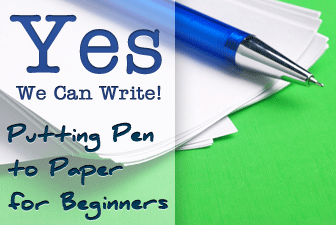12 Simple Tricks To Make Writing Fun


There comes a time in every beginner class to test the waters with writing to see where your students’ writing skills are, and to help them to enhance those skills. Solid writing skills will help your students increase their understanding of the language, and learn how to express themselves in new ways.

You will have different levels of capabilities and some students may not even have a basic grasp how to spell simple words. Often beginners have such limited vocabulary, writing can feel very intimidating and so they will need a lot of guidance. Don’t worry too much at the very beginning about grammar, spelling or punctuation. Let it go for now. You will have plenty of time to get into those details. Just get them to write something down the first few times.
You will want to begin by reviewing simple sentence structures that the students can model and practice. Point out the punctuation rules, and review some of the grammatical points you have been working on and incorporate them into a writing activity. Present tense and Present Continuous are good ones to get students writing. Review the grammar and the differences.
There is a lot you can have students write about that use just these two main beginner grammar points.
Using either pictures or real life objects can greatly help students get the pen moving. If they have something that they can look at for reference as they are working out what they want to say, you will get better results. Here is just one type of lesson that can be adapted:
Use pictures from a magazine and have each student pick one. Use a combination of portraits, street scenes, home scenes, and people doing activities, or anything that has some action to it. First, have them write five sentences about the picture on a loose piece of paper. I find it best to give them some direction, such as: write five sentences about what is happening in the picture. Write five sentences describing the picture. Write five sentences using adjectives/action verbs/present tense. You can come up with your own ideas that fit the students’ level. Have a few students share what they wrote and either write it up on the board for them or have them write it up there. You can go through and make some gentle corrections as you have another student read aloud what is written on the board. Always collect short writing activities so that you can make all the necessary corrections.
Don’t expect creative masterpieces at the beginning, and be open to assisting students express themselves. In general, they will need help with vocabulary, spelling, and expression. Students will use very basic language, but may also want to experiment with some surprisingly advanced concepts. Let them first explain what they are trying to say and be their dictionary for a time. As time progresses, give them writing activities that are coupled with grammar points, so that they can gain a better understanding. A few tips on where to progress are:
As students continue on their journey of putting pen to paper, it is a wonderful idea to give them resources to improve their work on their own. First introduce the dictionary, and make sure that you have a few good copies for them to use while in class. Many students already utilize electronic dictionaries, but getting them to use a hardcopy can greatly help them increase their vocabulary. Thesauruses are also great resources and can eliminate the frustration of limited (and pretty boring) word usage. You can incorporate activities with both books into writing activities and give students homework that will get them comfortable consulting the books while they are writing.
When you are crafting your activities and asking your students to put themselves out there remember that it can be challenging for native speakers to sit down and write. It takes a lot of courage, but both the teacher and the students will see great rewards!